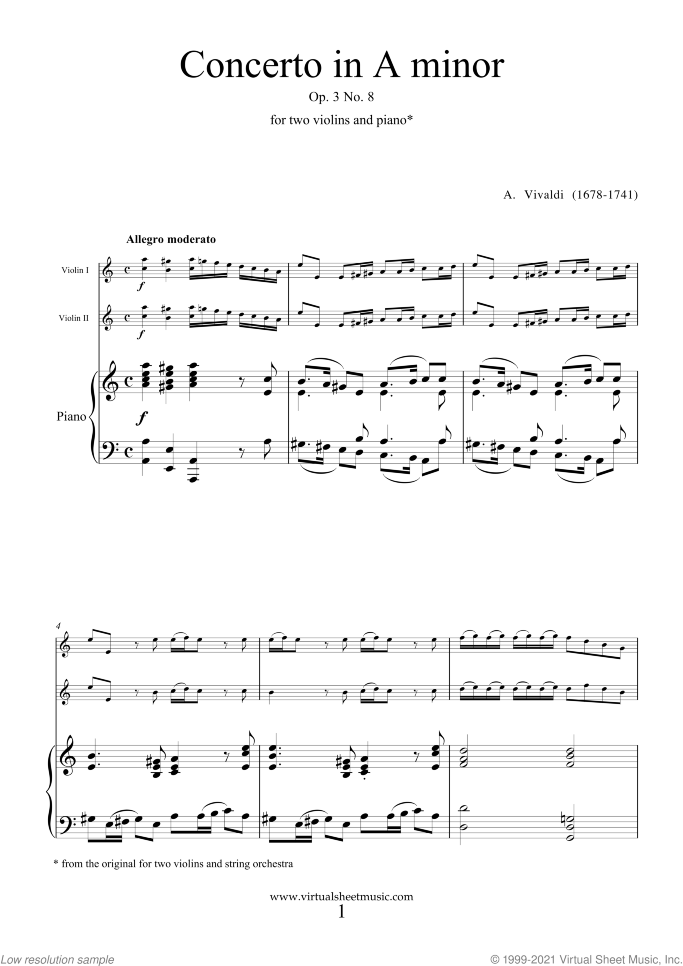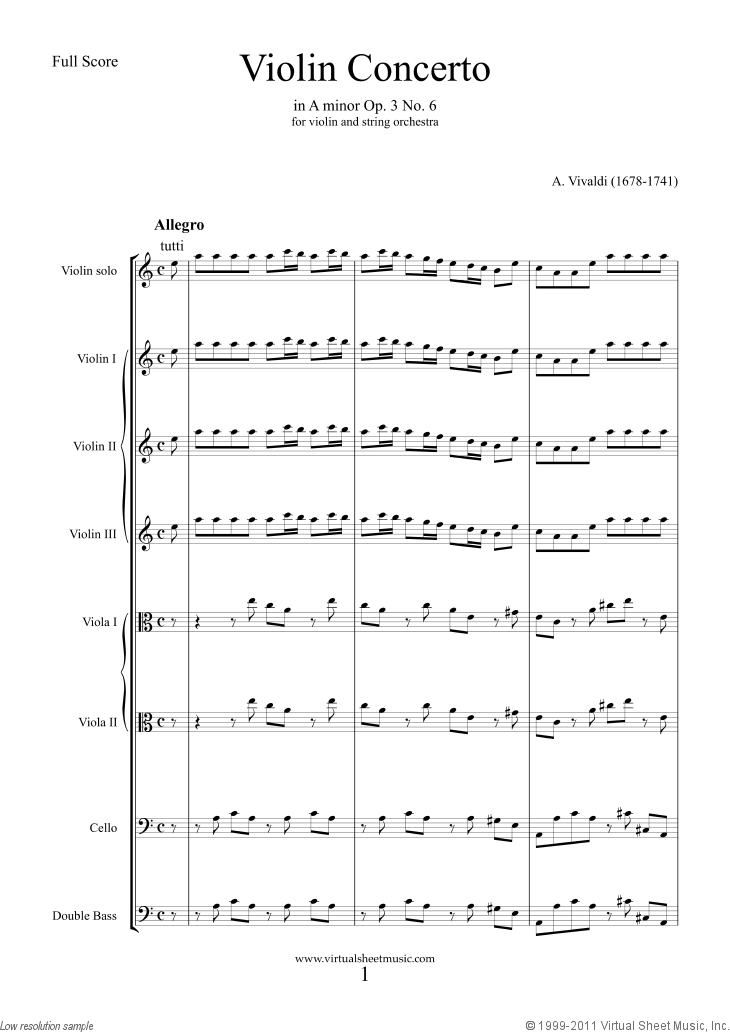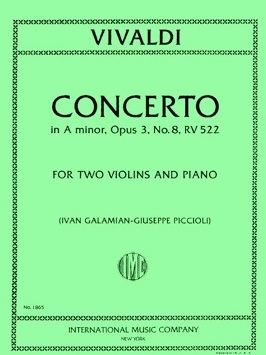
|
“In 1711, Etienne Roger, the Amsterdam publisher, brought out what was to become the most influential music publication of the first half of the 18th century: Vivaldi’s L’estro armonico, Op. 3,” writes Michael Talbot, biographer of Antonio Vivaldi. Certainly, these 12 concertos for one, two, three, or four violins became widely known during their first years of publication. J.S. Bach knew them, and he transcribed six of them for organ or keyboard, one of which is this A-minor Concerto for two violins, strings, and basso continuo.
Vivaldi’s fast movements are famous for dash and verve, and the opening Allegro of this work is no exception. Add to that the catchiness of the themes, and you have the recipe that has fascinated listeners from J.S. Bach to our time. In the solo parts, Vivaldi gives us just the right balance between beauty and virtuosic display.
- The Four Seasons (Italian: Le quattro stagioni) is a group of four violin concerti by Italian composer Antonio Vivaldi, each of which gives musical expression to a season of the year.They were written around 1716–1717 and published in 1725 in Amsterdam, together with eight additional concerti, as Il cimento dell'armonia e dell'inventione (The Contest Between Harmony and Invention).
- Concerto for 2 Violins in A minor, RV 522 (Vivaldi, Antonio).
The Larghetto, too, is quintessentially Vivaldi. Like bookends, the full orchestra’s statements at the beginning and end enclose the soloists’ vocal-inspired melodiousness. The “bookends” consist merely of a brief bass line, which becomes a repeated cycle over which the soloists spin out free variations.
Sonata for Strings in E-flat major Al Santo Sepolcro, RV 130. Sinfonia for Strings in E major, RV 131. Concerto for Strings in E minor, RV 133. Concerto/Sinfonia for Strings in E minor, RV 134. Sinfonia for Strings in F major, RV 135. Concerto for Strings in F major, RV. Spring from 'The Four Seasons' by Antonio Vivaldi Spring from the Four Seasons (beginners) by Antonio Vivaldi 'Spring' from the Four Seasons by Antonio Vivaldi Nocturne Op9, No2 by Frederic Chopin Ave Maria by Charles Gounod Prelude in C sharp Minor Op. 2 by Sergei Rachmaninoff.
In the Presto finale, orchestra and soloists work together closely to give us a movement based on a multi-part ritornello theme. It all fits tightly together, with snippets of the theme launching brilliant passages from the soloists, until the close — which will leave many of us hungry for more.
“In 1711, Etienne Roger, the Amsterdam publisher, brought out what was to become the most influential music publication of the first half of the 18th century: Vivaldi’s L’estro armonico, Op. 3,” writes Michael Talbot, biographer of Antonio Vivaldi. Certainly, these 12 concertos for one, two, three, or four violins became widely known during their first years of publication. J.S. Bach knew them, and he transcribed six of them for organ or keyboard, one of which is this A-minor Concerto for two violins, strings, and basso continuo.


Vivaldi’s fast movements are famous for dash and verve, and the opening Allegro of this work is no exception. Add to that the catchiness of the themes, and you have the recipe that has fascinated listeners from J.S. Bach to our time. In the solo parts, Vivaldi gives us just the right balance between beauty and virtuosic display.

Vivaldi In A Minor 1st Movement
The Larghetto, too, is quintessentially Vivaldi. Like bookends, the full orchestra’s statements at the beginning and end enclose the soloists’ vocal-inspired melodiousness. The “bookends” consist merely of a brief bass line, which becomes a repeated cycle over which the soloists spin out free variations.
Antonio Vivaldi Concerto In A Minor
In the Presto finale, orchestra and soloists work together closely to give us a movement based on a multi-part ritornello theme. It all fits tightly together, with snippets of the theme launching brilliant passages from the soloists, until the close — which will leave many of us hungry for more.
